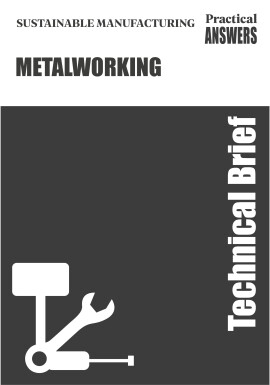
The Blacksmithing Instructors Guide
Sixteen lesson plans with teaching advice
This guide is designed to help skilled blacksmiths who have little or no teaching experience to train others in forge work techniques, using easily obtainable equipment and scrap metal to produce tools such as hoes, sickles, hammers and axes.
Published: 1993
Pages: 80
eBook: 9781780441993
Paperback: 9781853392146
| Preface va | |||
|---|---|---|---|
| Part 1. The housing process and the economy 1 | |||
| 1. Urbanization and the need for housing 2 | |||
| 1.1 The inevitability of urbanization, 2 | |||
| 1.2 Measuring the need for housing, 4 | |||
| 1.3 Expected future populations, 5 | |||
| 1.4 Income and affordability, 6 | |||
| 1.5 Housing attributes, 8 | |||
| Case study: the development of Villa el Salvador, Peru, 10 | |||
| 2. The housing process ll | |||
| 2.1 Housing as a verb, 11 | |||
| 2.2 Obstacles, 14 | |||
| 2.3 Shelter options, 17 | |||
| Case study: a proposed enabling strategy, Nepal, 25 | |||
| 3. Housing and the economy 28 | |||
| 3.1 Housing, construction and economic growth, 28 | |||
| 3.2 Forward linkages from construction, 29 | |||
| 3.3 Wealth generation through housing, 29 | |||
| 3.4 Backward linkages from housing and construction, 30 | |||
| 3.5 The effect of technology choice upon employment, 32 | |||
| Case study: producer co-operatives, Mozambique, 34 | |||
| 3.6 Maximizing the contribution of the building materials sector, 35 | |||
| Case study: supporting sustainable urban development, Egypt, 37 | |||
| Part 2. Promoting building materials supply 41 | |||
| 4. Economic charcteristics of building materials production 42 | |||
| 4.1 Classification of building materials industries, 42 | |||
| 4.2 High-tech industries (Group 1), 43 | |||
| 4.3 Unprocessed materials (Group 3), 45 | |||
| 4.4 Intermediate group of industries (Group 2), 46 | |||
| 4.5 Secondary products, 49 | |||
| 4.6 Factors affecting building materials' prices, 49 | |||
| Case study: minicement plants, India, 52 | |||
| 5. The crisis of building materials' supply 54 | |||
| 5.1 Indigenous materials, 54 | |||
| 5.2 Building practices, 57 | |||
| 5.3 Commercial introductions, 58 | |||
| 5.4 Appropriate Technologies, 60 | |||
| Case study: stabilized soil, Zambia, 64 | |||
| 6. Aid and technology transfer 66 | |||
| 6.1 Private entrepreneurs and state enterprises, 66 | |||
| 6.2 Banks, aid agencies and Appropriate Technology organizations, 67 | |||
| 6.3 Government organizations, 69 | |||
| 6.4 NGOs and the informal sector, 70 | |||
| 6.5 Products, prices and markets, 71 | |||
| Case study: the Santa Rosa housing co-operative, Ecuador, 73 | |||
| 7. Building materials and householder choice 76 | |||
| 7.1 Householder choice, 76 | |||
| 7.2 Influencing choice, 78 | |||
| Case study: the use of postcards at Centro Sinchaguasin, Ecuador, 82 | |||
| 8. Creating the policy context - the role of governments 84 | |||
| 8.1 Policy instruments, 84 | |||
| 8.2 Revitalization of high-tech large-scale industries, 85 | |||
| 8.3 Support to small-scale building material producers, 86 | |||
| Case study: supporting builders' yards, Karachi, 87 | |||
| 8.4 Encouragement of new investment in medium-sized plants, 87 | |||
| 8.5 Promotion of new and promising technologies, 88 | |||
| 8.6 Protection for the environment and expansion of the resource base, 89 | |||
| 8.7 Conflicting objectives, 90 | |||
| Case study: the Koma Rock housing project, Nairobi, 92 | |||
| 9. Summary and conclusions 94 | |||
| 9.1 Six general objectives, 95 | |||
| 9.2 Ten action proposals for governments, 96 | |||
| 9.3 Ten action proposals for aid agencies, 98 |
David Harries
David Harries has been involved in development technology for the past eight years, and during this time has lived and worked in West and Southern Africa.





